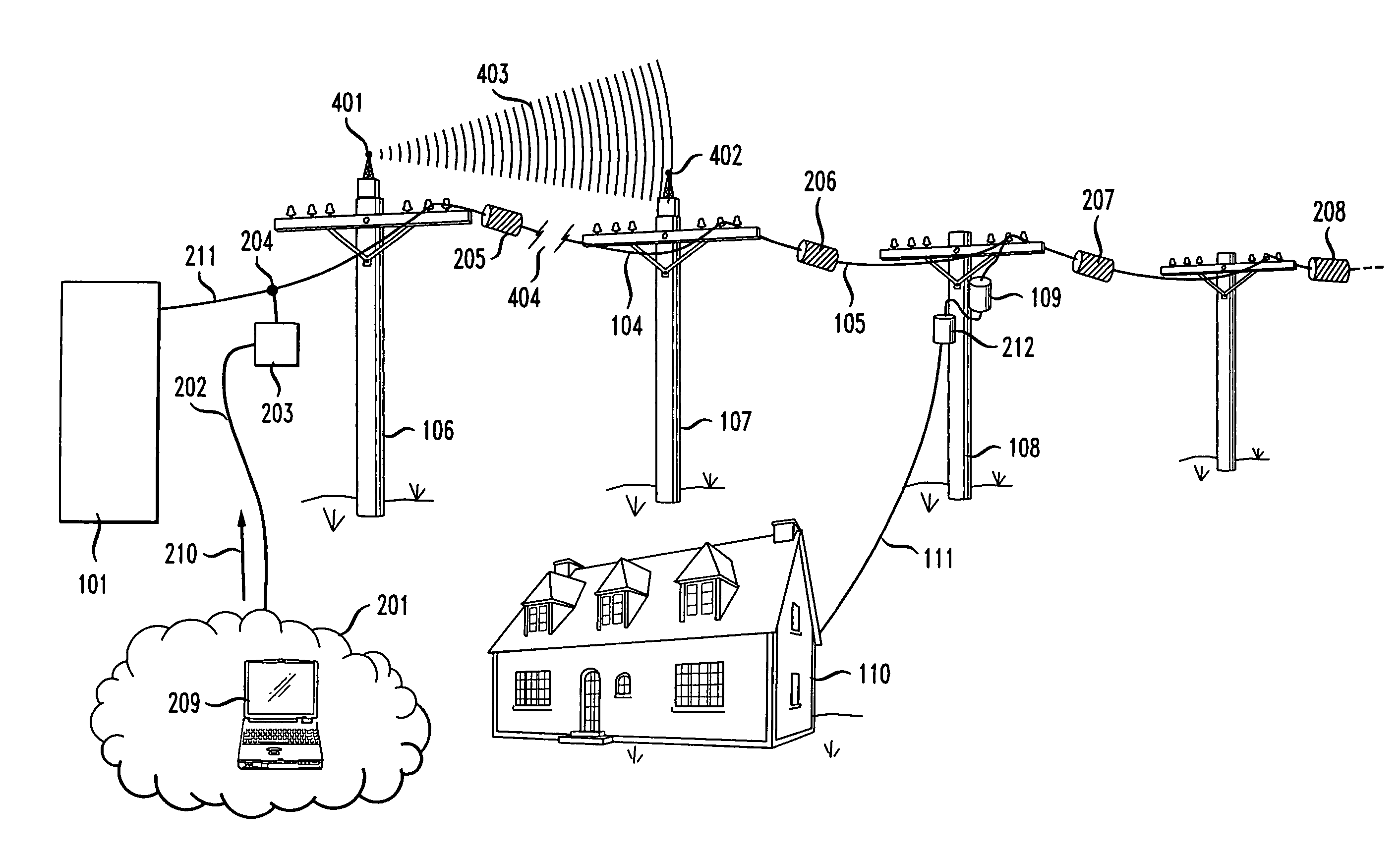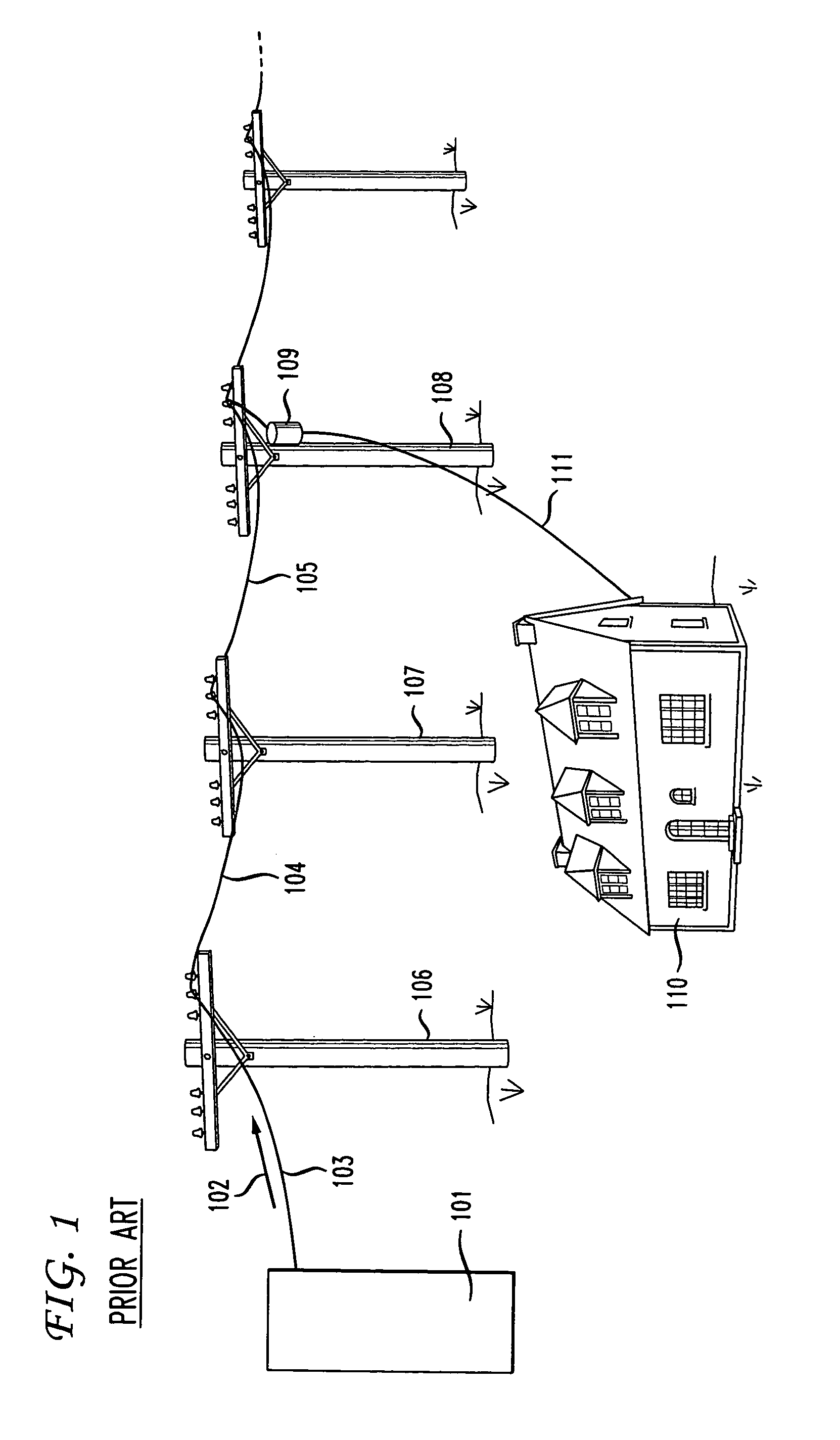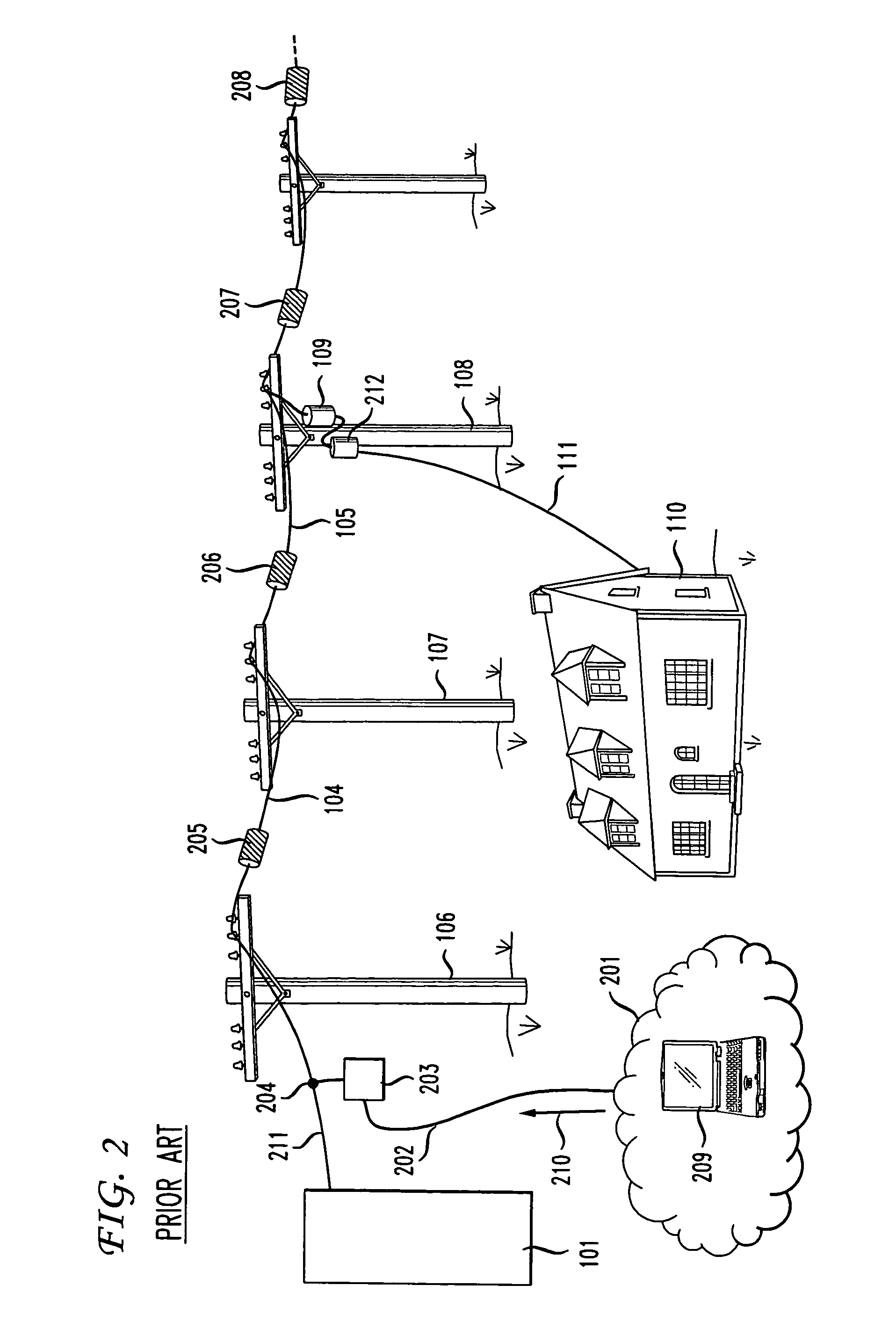Wi-Fi/BPL dual mode repeaters for power line networks
- Summary
- Abstract
- Description
- Claims
- Application Information
AI Technical Summary
Benefits of technology
Problems solved by technology
Method used
Image
Examples
Embodiment Construction
[0012]FIG. 1 shows a portion of a power network such as that commonly used to deliver electricity to homes and businesses. In that figure, substation 101 receives electricity from one or more power plants via transmission equipment and high voltage transmission lines. As is well known, transformers in substation 101 step down the power from transmission level voltages (extremely high voltages) to distribution voltages (typically less than 35,000 volts). Buses at the substation then split the distribution power off in multiple directions, such as direction 102 in FIG. 1. Electricity conducting wires, such as illustrative wires 103, 104 and 105, are suspended above the ground by poles, such as poles 106, 107 and 108. The electricity is stepped down once again to an illustrative 120 / 240 Volts by transformer 109 and is then delivered to an end destination, such has house 110, via tap wire 111. One skilled in the art will recognize that, while an overhead power line system is shown in FI...
PUM
 Login to View More
Login to View More Abstract
Description
Claims
Application Information
 Login to View More
Login to View More - R&D
- Intellectual Property
- Life Sciences
- Materials
- Tech Scout
- Unparalleled Data Quality
- Higher Quality Content
- 60% Fewer Hallucinations
Browse by: Latest US Patents, China's latest patents, Technical Efficacy Thesaurus, Application Domain, Technology Topic, Popular Technical Reports.
© 2025 PatSnap. All rights reserved.Legal|Privacy policy|Modern Slavery Act Transparency Statement|Sitemap|About US| Contact US: help@patsnap.com



